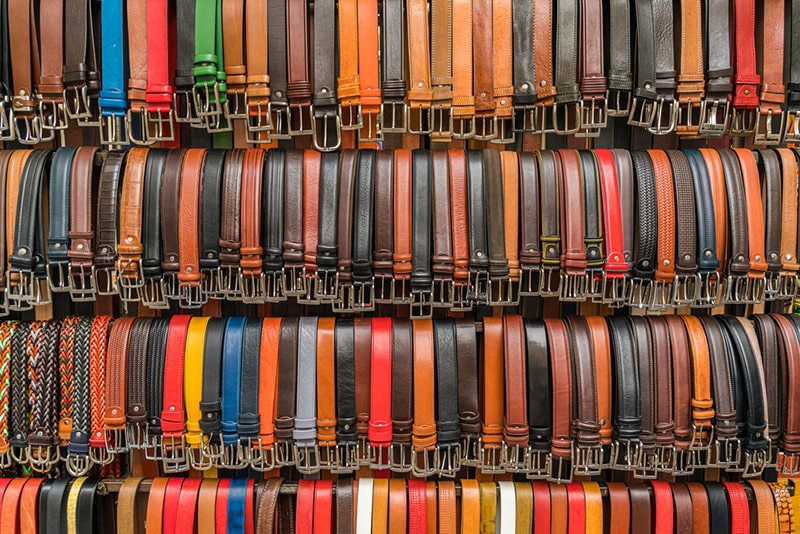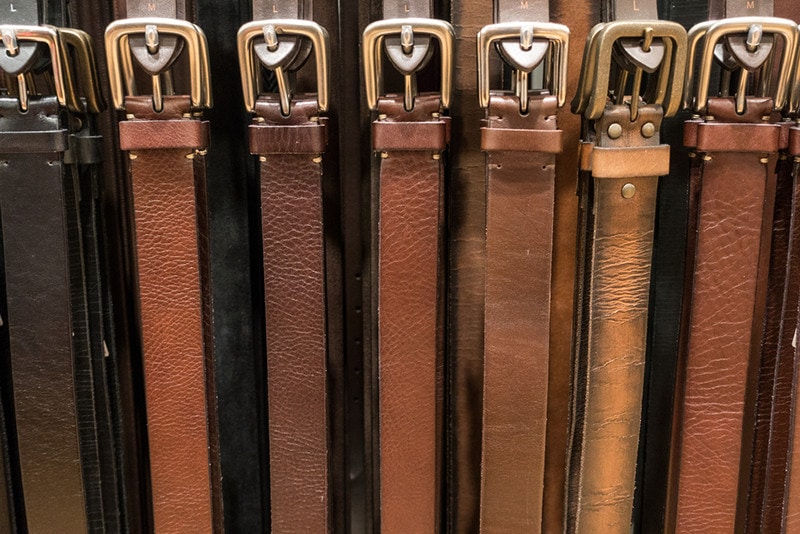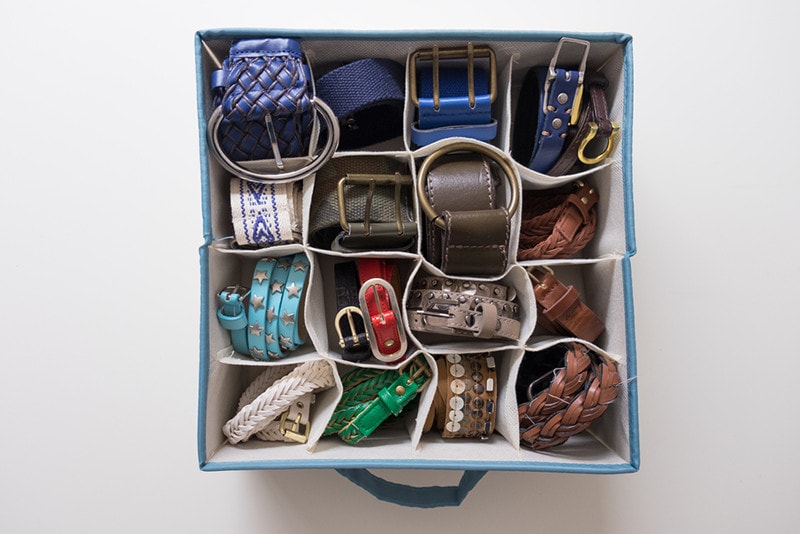How to Store Belts (9 Great Tips & Tricks)
-
Pete Ortiz
- Last updated:

From your watch to your wallet, the smallest details can have the greatest impact when you want to make an excellent impression. Tying it all together, the belt will make or break your outfit, with an unkempt accessory dismantling your appearance no matter how crisp you keep everything else. And when you rely on it to keep your pants up and comfortable, it could even be the difference in whether you go out at all!
There’s more at stake than you may realize in keeping your belts in excellent condition. When you’re not wearing them, storage habits are critical in keeping your favorite pieces from wearing out prematurely. High-quality belts get pricey, and your bank account will thank you for the extra care. Learn how to guarantee the best look every time you suit up with these eight tips on storing belts the right way.
 The 9 Ways to Store Belts
The 9 Ways to Store Belts
1. Use a Closet Belt Rack or Belt Organizer
Belt racks are simple tools that can handle all your belt-hanging needs. The narrow rack features lines of hooks or slots to hold the buckles and let the belts dangle in a tidy row.
With closets being the ideal storage area for any belt style, most belt racks feature designs to work seamlessly alongside the rest of your apparel. Wall-hanging belt racks attach to the closet wall with a couple of screws. Alternatively, belt-holding hangers have a hook in the center to keep your belts neatly organized on the closet rod.
Racks and closet rod organizers cost about $5–$20 and only take a few minutes to install at most. Save space in the closet and make it easier to find your belt by attaching the rack to the back of the closet door. Keep it centered on the door at least a few inches from either edge to prevent swinging belts from jamming it when you try to close it.
2. Use a Sliding Belt Rack
For a few extra bucks, you can upgrade your closet belt rack to a sliding organizer, a convenient and space-saving solution if your closet has any cabinets to use. Featuring hanging hooks for the belts, the rack includes a ball-bearing slider. Attached to the side wall of a cabinet, you can pull out your line of belts to make them all easily accessible.
3. Hang Leather Belts, Roll Canvas Belts
Hanging leather belts is the best way to maintain their shape and size for longer life and a consistently sharp look every time you wear them. Rolling belts tightly can stress the material, creating sharp creases that will be apparent when you wear the belt and could cause the leather to crack and wear down quicker.
Canvas belts don’t have the same issue with rolling, so if you have limited space in the closet, prioritize your leather belts for hanging. Roll your canvas belts, and designate drawer space in your dresser or chest.

4. Separate Your Belts
If you have no choice but to stack your belts in a drawer until you find a more suitable storage solution, take extra measures to prevent them from touching one another. Corrected leather contains dyes that can transfer to other materials if it makes firm or abrasive contact with them for long periods. Maintain the color of your corrected leather and the hard-earned patina of your full-grain leather by separating your belts.
5. Buy a Belt Storage Box
The only thing left is to create more room when there’s no closet or drawer space for your accessories. The best course of action is a belt storage box, a standalone divided case to hold rolled belts, often featuring a clear lid to see in. Storage boxes carry about 6–8 belts, and though they start around $30, the high-quality options typically exceed $80.
6. Organize Rolled Belts in Drawers

You’re not out of luck completely if you have zero space for your leather belts. While you can’t roll them as tight as canvas belts, leather can tolerate enough flexing for storage in a loose roll. If you coordinate your pieces, you can use a matching band to wrap around the belt to maintain its shape. When you’re ready to get dressed, your accessories will be together in a tidy bundle.
For cleaner drawer storage, a belt organizer will keep your belts in order and easy to find. Dividers and drawer cubbies cost about $20–$50. Stacked organizers for closets provide similar rolled storage space with clear cases for a more elegant display.
7. Keep Out Light, Moisture, & Heat
No matter the style or the space, the simplest way to protect your belts in storage is to avoid their three worst enemies—light, moisture, and heat. Sunlight is dangerous to both canvas and leather, leaving room for bleached, dulled colors over time. As the glass/clear plastic lid of belt storage boxes can often exacerbate the damaging effects of sunlight, storing cases in sheltered spaces is essential.
Though they have less effect on cloth, water and heat can devastate leather. Leather is porous, accepting a minute bit of moisture without issue, and a little humidity will even help it stay supple. It’s a balancing act. Hot, overly dry conditions can cause the leather to shrink, warp, and crack, but excessive moisture will lead to mold and rot.
8. Maintain Humidity Near Stored Belts
The optimal humidity for belt storage is between 30–50%, as mold typically cannot pull enough moisture to grow when the relative humidity (RH) is below 60%. Keep a humidifier and/or dehumidifier available as needs change with the seasons. A cheap digital hygrometer will help you keep tabs on the RH around your belts, clothes, and accessories, ensuring they’re always fresh.
Maintaining the RH balance and low-light conditions is one reason closets are such practical storage spaces. They’re temperature-controlled and easy to shield from light, and keeping the humidity at a reasonable level is easy with hanging dehumidifying packs.
9. Condition Leather Belts Before Storage
Conditioner works as well for belts as it does for shoes, furniture, and other leather items. Applying it to your leather belts before storage will repel dirt, brighten the material’s sheen, and keep them from drying out and absorbing too much moisture. It takes only a few minutes to buff in the conditioner with a dry cloth, and your belts will last much longer in storage with the extra effort.
 Conclusion
Conclusion
Since they’re full of fashion and function, belts may be the ultimate accessory. You owe it to yourself to treat yours well, and thankfully, it takes almost zero effort to keep them looking their best when you know what you’re doing. Keep these tips and insights in mind, and you’ll be one critical step closer to creating a flawless look whenever you leave the house.
See also:
Featured Image Credit: kan_khampanya, Shutterstock
Contents

 The 9 Ways to Store Belts
The 9 Ways to Store Belts